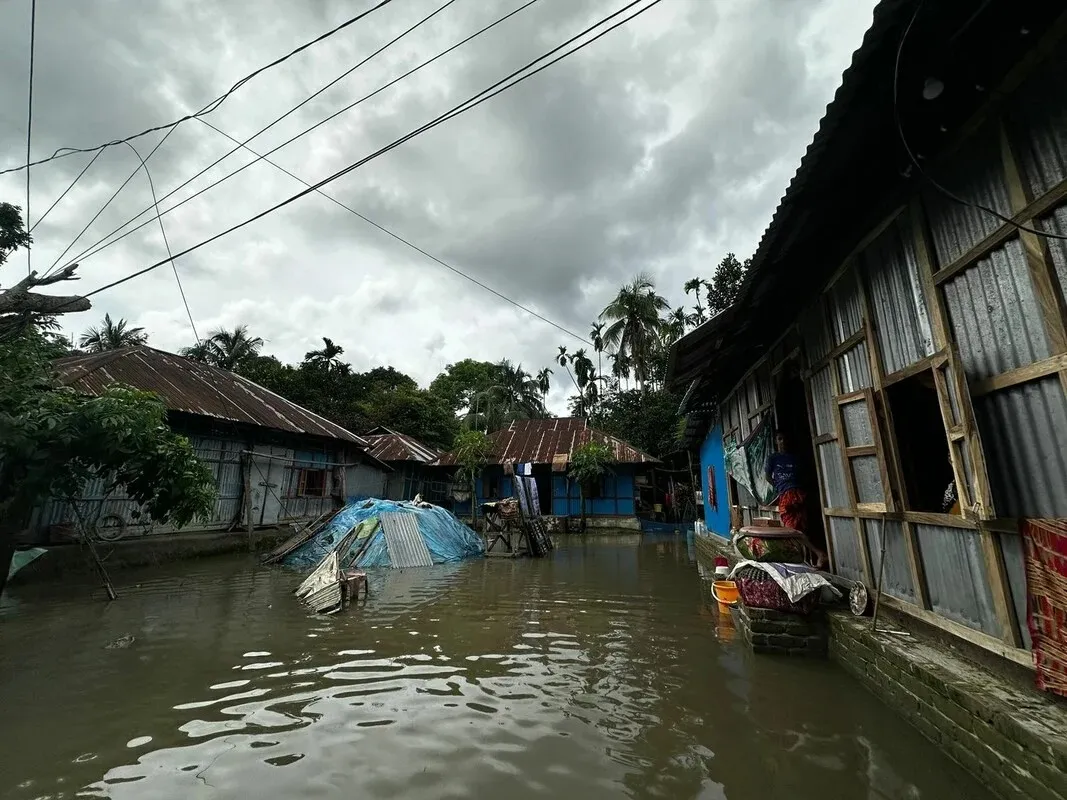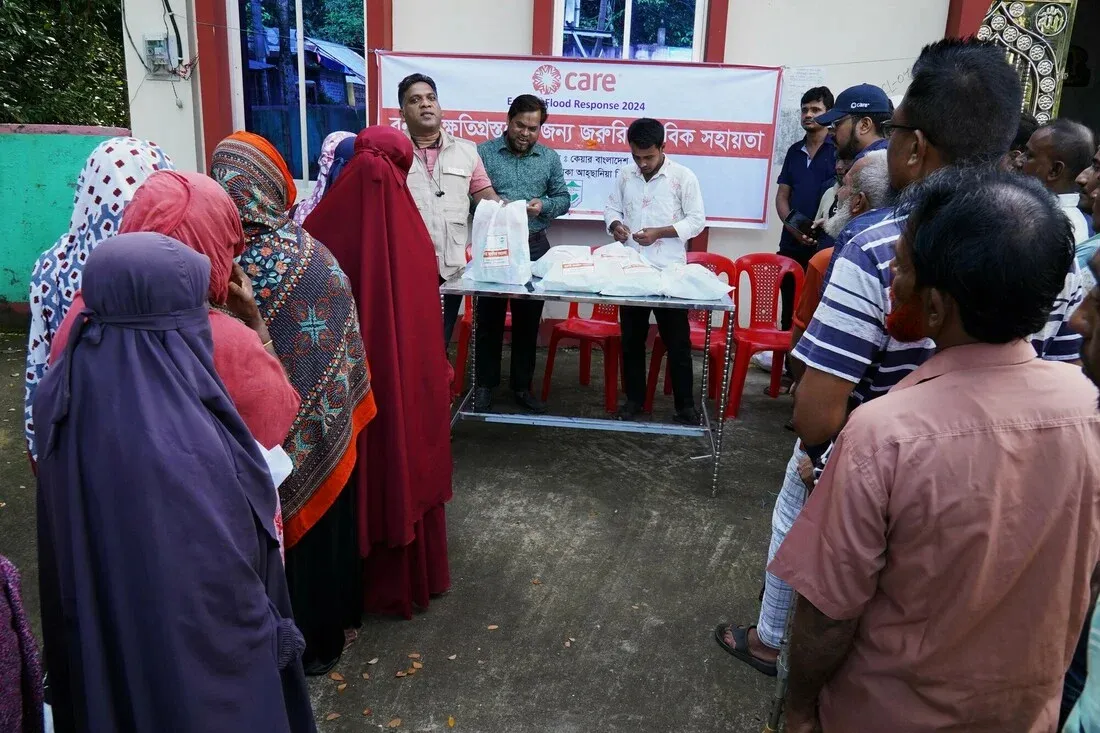In August 2024, unprecedented floods in eastern Bangladesh devastated the region, the worst in 30 years. Shahina and nearly 6 million others have suffered severe impacts across 11 districts from the northeast and southeast.
Persistent rainfall and rising river levels caused widespread flooding, displacing over 500,000 people and claiming 59 lives.
“I’ve never experienced anything so devastating in my life. The water rose so high, it reached all the way up to my waist,” says Nur Nahar, a housewife with three children and a disabled husband.
“Our house, our kitchen, everything was completely submerged. There’s nothing left. We’re homeless.”
“All our belongings were washed away in the floods. Now, I’m struggling to provide food and clothing for my three children.”
Floodwater had caused extensive damage to roads, croplands, and homes. The livestock and fisheries sectors were particularly hard hit, with losses estimated at over $155 million.




